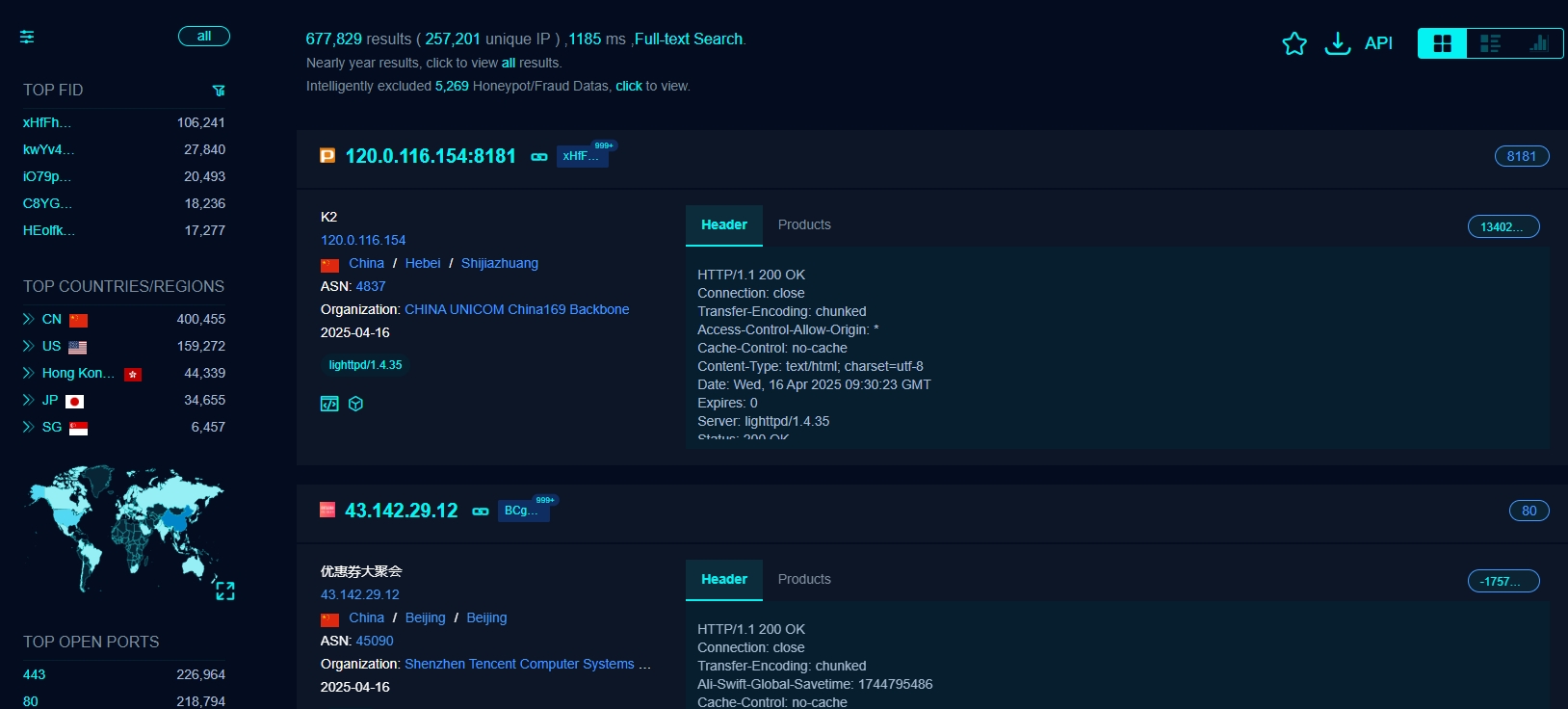
What is a CC attack? Challenge Collapsar Attack (CC) is a type of attack against web applications, often referred to as "denial-of-service attacks on websites" (DDoS), that consumes server resources through a large number of forged HTTP requests, causing the server to overload or even crash. DDoS The attacker does this by sending a large number of requests, usually forged, low-speed requests that do not require as much bandwidth as a DDoS attack, but which can exhaust the server's processing power with a large number of requests, ultimately rendering the service unavailable. This type of attack is characterised by a low volume of traffic, but an extremely high frequency of requests, with the aim of exhausting the resources of the web application server and causing the service to block. CC Attack Principle The principle of CC attack is that the attacker sends a large number of packets to the other party's server non-stop by controlling certain hosts, especially those pages that require a large amount of CPU resources to process, such as forums, database queries, etc., in order to consume the server's resources, so that the CPU is under high load for a long period of time, which results in the server's resources being exhausted, causing network congestion and service interruption, and unable to process normal access requests. Recommended platforms for CC stress testing in 2025 1.51DDOS 51DDOS is a professional DDoS and CC attack stress testing platform designed to help enterprises and webmasters assess the attack resistance of their websites and servers. By simulating real DDoS attack scenarios, users can identify weaknesses in their systems and prepare for defence in advance.

Official website address:https://www.51ddos.com
LambdaTest (lambdatest.com) is an AI-native, omni-channel software quality platform that helps organisations accelerate time-to-market through intelligent, cloud-based test authoring, orchestration, and execution.With more than 15,000 customers and 2.3 million users in more than 130 countries, LambdaTest is the trusted choice for modern software testing. LambdaTest is the trusted choice for modern software testing. Browser and Application Testing Cloud: Ensure cross-platform consistency with manual and automated testing of web and mobile applications across 5,000+ browsers, real-world devices, and operating system environments.
Official website address:https://www.lambdatest.com
3.BrowserStack
BrowserStack is the leading testing platform built for developers and quality assurance personnel to extend test coverage, scale and optimise tests. Teams and organisations of all sizes use BrowserStack, whether they are testing manually, starting test automation or scaling automation. More than 50,000 customers including Amazon, Paypal, Wells Fargo, Nvidia, MongoDB, Pfizer, GE, Discovery, React JS, Apache, JQuery, and more rely on BrowserStack to test their web and mobile applications. We help them - expanding test coverage with cross-browser, real device, accessibility and visualisation testing. - Extend test automation with BrowserStack's leading cross-browser, real-device cloud and test observability.

Official website address:https://www.browserstack.com
4. PFLB
PFLB is an AI-powered load testing platform designed to help teams scale their websites and applications with confidence. With PFLB, you can effortlessly simulate massive amounts of traffic, replicating real-world conditions and ensuring your products perform under peak loads.

Official website address:https://pflb.us/
5. Gatling
Gatling is a load testing solution that helps organisations identify bottlenecks and ensure website stability under traffic load through automated testing.Gatling Enterprise includes advanced reporting features (real-time reporting, TCP connection metrics, bandwidth usage, injector monitoring) and automation features (public APIs, new continuous integration plugin, cluster mode). Gatling's solutions have been downloaded 16,000,000 times from over 100,000 companies globally across a wide range of industries such as software, e-commerce, streaming media, banking, insurance, gaming and finance.

Official website address:https://gatling.io/
6.LoadView
Dotcom-Monitor's LoadView is for DevOps teams and performance test engineers who want to load test websites, web apps, APIs, and streaming media using real browsers with hundreds or thousands of simultaneous connections through a fully hosted cloud. LoadView also supports load testing of Postman Collections and JMeter scripts. With EveryStep Web Recorder, the LoadView platform enables teams to quickly and easily script complex user scenarios and have the flexibility to design multiple test scenarios for today's most complex websites and applications!

Official website address:https://www.loadview-testing.com/
7.k6
k6 is an open source tool and cloud service that makes load testing easy for developers, operations and quality assurance engineers. We help software teams improve their testing processes so they can consistently deliver fast, reliable applications.

Official website address:https://k6.io/
How to protect against cc attacks?
1. Use Session to perform access counters
Use Session to create page visit counters or file download counters for each IP to prevent users from frequently refreshing the page, resulting in frequent database reads or frequent file downloads to generate large amounts of traffic. (File downloads should not use the download address directly in order to filter CC attacks in the server code)
2. Generating static pages for the website
A lot of facts have proved that, as far as possible to make the site static not only can greatly improve the ability to prevent attacks, but also will bring a lot of trouble to hackers. For example, portals such as Sina, Sohu and NetEase have mainly static pages. If you don't need dynamic scripts, you can send them to a separate host to avoid the main server in case of an attack.
3. Enhancement of the TCP/IP stack of the operating system
As server operating systems, Win2000 and Win2003 have some protection against DDOS attacks. They are generally not enabled by default. If they are enabled, they can withstand about 10,000 SYN attack packets, and you can go to the Microsoft official website to see how to do it.
4. Deployment of high-defence CDN defence
The simplest and most convenient way to defend against CC attacks is to hide the server source IP by accessing the high-defence CDN, which can automatically identify the malicious attack traffic, intelligently clean the false traffic, and return the normal visitor traffic to the source server IP to ensure the normal and stable operation of the source server.
Recommended Reading::Inventory of the latest DDoS attack tools for 2025: defence and countermeasure strategies

 Chinese
Chinese  English
English  Dutch
Dutch  Russian
Russian  Portuguese
Portuguese 


